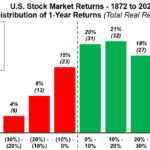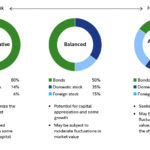1. What Are Municipal Bonds?
Municipal bonds—or munis—are debt securities issued by state and local governments to fund public projects such as schools, roads, water systems, and more. The majority are tax-exempt at the federal level, and many also evade state and local taxes for residents of the issuing area Investors primarily include high-income individuals seeking steady, tax-advantaged income.
2. Why Munis Are Relevant in 2025
📉 Market Volatility & Economic Uncertainty
The first half of 2025 saw significant volatility: tariff threats, fiscal deficits, political intervention, and a brief bond-market sell-off during the April equity crash In such conditions, muni bonds—traditionally seen as shelter assets—have become attractive again.
💸 Elevated Yields & Tax-Equivalent Advantage
As of June, the 10-year AAA muni yield was ~3.3%, translating to a tax-equivalent yield (TEY) of approximately 5.7% for high-bracket investors The 3-year muni index yielded 5.02% TEY, outperforming taxable money-market funds by ~112 bps
🌱 Resilient Fundamentals
Fiscal conditions in state and local governments remain strong. Moody’s reported that 72% of municipal issuers carry AAA or AA ratings, the highest level in nearly two decades Moody’s has upgraded more issuers than downgraded for 17 straight quarters
3. Mid-Year Performance: A Mixed Bag
| Metric | Performance in H1 2025 |
|---|---|
| Total returns | Muni bonds underperformed Treasuries in early 2025 |
| Issuance volumes | Tax-exempt issuance hit record levels—$253 b in H1 |
| Duration yields | Steep yield curve: 2‑yr vs 10‑yr spread ~60 bps |
| Short-term yields | Munis generated higher yields than taxable bonds on after-tax basis |
Takeaway: Munis underperformed early in 2025, but yield levels and fundamentals remain strong, positioning them well for recovery if issuance slows.
4. Strengths of Investing in Munis
✅ Tax-Free Income
The primary allure: federal tax exemption, plus possible state and local benefits. For high-bracket investors, TEY often exceeds 7–8% .
✅ Solid Credit Quality
With most issuers in top-tier credit categories, default risk is historically low .
✅ Diversifier in Bond Portfolios
Munis typically perform differently than corporates or Treasuries under inflation or stock market stress, enhancing portfolio resilience
5. Risks and Challenges
⚠️ Interest Rate & Duration Risk
Municipal yields are sensitive to rate changes. Duration exposure led to price softness earlier in the year .
Mitigation: Favor intermediate maturities (5–7 years) to balance yield and interest-risk .
⚠️ Oversupply Pressure
Record issuance creates supply gluts, leading to suppressed prices and elevated yields .
⚠️ Policy & Credit Exposure
Munis face risks from federal cuts (e.g., Medicaid) and tariff volatility, which can hurt state budgets in sectors like schools and hospitals
⚠️ Liquidity Constraints
Individual munis are less liquid than Treasuries. ETFs and funds offer greater flexibility .
6. Strategies for Muni Investors in 2025
🛡️ Favor Shorter & Intermediate Durations
Given rate uncertainty, 5–7-year maturities strike a good risk-return balance
🧠 Use Active Management
Active managers can navigate credit and call risks better than passive approaches. Morgan Stanley reports active muni ETFs outperform by ~68–84 bps over 3–10 year periods
🎯 Focus on High Quality
Stick to AAA/AA-rated issues unless comfortable analyzing lower-grade bonds .
💵 Explore ETFs & Funds
Fund vehicles offer liquidity, diversification, and professional oversight. The muni ETF space is growing rapidly .
📅 Laddering Bonds
Building a maturity ladder through individual bonds delivers predictable cash flows and reduces reinvestment risk.
7. Who Gains Most from Munis?
- High-income earners: TEY maximizes tax savings.
- Risk-conscious investors: Munis offer safer, tax-efficient income.
- Income-focused retirees: Reliable, tax-free yield preserves principal.
Barron’s suggests municipal yields are now comparable to S&P returns and recommend including munis as core holdings in uncertain environments .
8. A Closer Look: Real-World Data
- NUVEEN: 10-year AAA munis yield ~3.30%, TEY of 5.7%—~2.2% above corporates at high tax brackets
- S&P muni TEY jumped from 5.69% to 6.36% in April, greater than levels seen during the COVID sell-off
- New York Life notes the 3-year muni TEY leads short-term money-market yields by 114 bps .
9. Potential Risks on the Horizon
- Tax Code shifts: Federal reviews could restrict muni exemptions, though bipartisan support suggests low risk
- Economic slowdown and fiscal pressures: Could pressure state budgets.
- Natural disasters/medicaid cuts: May impact specific issuer credibility.
- Rate volatility: Sharp moves could unsettle muni prices.
10. Final Verdict: Should You Invest in Munis Now?
Yes—especially for high-bracket investors seeking tax-efficient income with relative safety.
- Yields are historically attractive.
- Credit quality is strong.
- Tailwinds from policy and volatility support market positioning.
However, it’s crucial to:
- Stay nimble: Shift duration based on Fed signals.
- Favor active management or ladders to manage risk.
- Focus on high-credit bonds unless you’re structured to absorb risk.
✅ Key Takeaways
- Strong yields: 10-year AAA munis ~3.3%; TEY ~5.7–6%.
- Elevated issuance pressured prices, but inflation adjustments made yields attractive.
- High credit quality and tax exemptions make munis a reliable shelter asset.
- Active strategies outperform passive in volatile periods.
- Shorter durations offer better risk-reward balance in uncertain policy climates.
- Retirees and income investors benefit most from muni income shields.
Municipal bonds offer an appealing mix of tax advantages, credit stability, and predictable yield, making them a valuable asset in uncertain times. If you’re considering munis for your portfolio, I can help with bond ladder design, selecting funds, or building a tax-equivalent yield model.


